
This is a 3-dimensional model image of an ethylene molecule.
- Subject:
- Chemistry
- Science
- Material Type:
- Diagram/Illustration
- Provider:
- The North Carolina School of Science and Mathematics
- Author:
- NCSSM
- Date Added:
- 02/26/2019

This is a 3-dimensional model image of an ethylene molecule.

Students investigate how different treatments such as work-hardening, tempering, and annealing affect the mechanical properties of a number of metals.
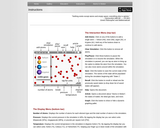
This app for iPad devices is a fully interactive atomistic simulation that shows the motions of atoms as they attract, repel, and collide with one another. With the tap or swipe of a finger, students can add, delete, or highlight molecules, as well as increase/decrease temperature, pressure, or volume and explore the states of matter. An associated simulation, Salts, allows students to manipulate atoms and ions to join to form crystals.
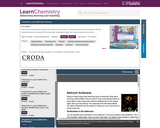
This article can be used with the activity "Chemistry in your Bathroom" or independently. In this article students will learn about surfactant, emulsifying agents, and surface tension. This lesson is great for teaching about the difference between hydrophyllic and hydrophobic molecules.

Part of NCSSM CORE collection: This animation shows the rotation around a single bond in a molecule.
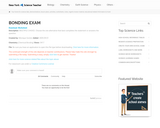
This assessment resource probes for student mastery of concepts associated with chemical bonding.

In this lesson, students use geometry to predict the shape of carbon.

In this lab activity, students are given three chemical compounds to be tested. They will then determine three chemical and three physical properties for each, using experimental data.
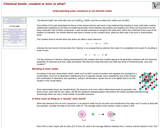
This resource is an in-depth discussion, with diagrams, covering the different types of chemical bonding. It details ionic bonds, covalent bonds, polar covalence, and electronegativity.
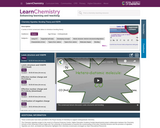
This series of videos will introduce bonding theory.
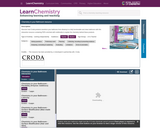
In this interactive students will learn chemistry concepts by discovering how "Croda" products transform the bathroom from a disarray to a fully functional clean bathroom. There are articles attached for students to review about various topics.

In this lesson, students research and discuss real-world chemical issues. Students will either participate in a debate or write and essay in which they compare and contrast several points of view.

Students will explain how hydrogen can be extracted from water and how energy flows through the electrolysis system.
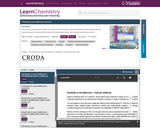
This article can be used with the activity Chemistry in your Bathroom or independently. The article talks about polymers and additives of bathroom supplies and how they are made. The article goes into detail about amides, slip additives, and antistatic additives. UV protection is also briefly discussed.
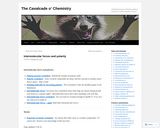
This webpage offers links to a variety of worksheets to provide students practice in determining polarity of molecules and identification of intermolecular forces from the Lewis structures.

Students will: determine the number of valence electrons using energy level diagrams; explain why elements lose or gain electrons during ionic bonding; define an ion; write correct ion notation; describe some properties of ionic compounds; develop a hypothesis which explains what happens when an ionic compound dissolves.

In this lab activity, students create molecule models and measure bond angles using protractors to better understand VSEPR theory and molecular geometries.
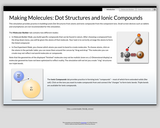
This simulation provides practice in building Lewis Dot Structures from atoms and ionic compounds from the component ions.

In this activity, students make molecules and ions out of marshmallows and Redhot candies. This lesson should be done after students have an understanding of VESPR theory.

Students will model the single displacement/redox reaction of separating silicon from silicon dioxide.